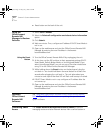
3-2
C
HAPTER
3: R
EMOTE
S
ITE
M
ANAGEMENT
■
IPX — IPX network address information, static routes and services,
and RIP usage.
■
Bridging — Bridging (enable / disable) to the remote site.
If you need to connect to multiple remote sites such as the Internet and a
remote office, you should set up a remote site profile for each location.
Managing a
Remote Site Profile
Once created, remote site profiles can be enabled or disabled. When a
profile is enabled, the OfficeConnect Remote 840 reads the connection
parameters for the remote site from the profile and continuously
attempts to establish a connection to the remote site.
When a profile is disabled, the connection will be terminated and no
other data will be directed to the remote site.
Configuration changes to a remote site profile do not take effect until the
next time the profile is enabled. The OfficeConnect Remote 840 Manager
automatically disables and re-enables the remote site profile when the
Modify button is pressed on the Remote Site menu page.
To disable or enable a profile manually, clear or check the Enable
Remote Site checkbox as appropriate.
Once you start modifying a Remote Site, you must click Modify before
you exit the Remote Site screens, or else the data you entered will be lost.
Also, remember to save your configuration before rebooting your
OfficeConnect Remote 840 so that your changes will be written to
permanent FLASH memory.
Adding a Remote Site
Profile
1 From the OfficeConnect Remote 840 Manager home page, select
Configuration > Remote Sites (WAN). Then click the Add button to
bring up the Remote Site General Add screen.
2 Enter the Remote Site Name. Enter a name to use to identify the remote
site profile. (Ex: ISP or CorpOffice)
3 Ensure that the Enable Remote Site box is checked if you want to the
connection to come up as soon as you finish the configuration.
840ug.book Page 2 Friday, July 7, 2000 2:23 PM


















